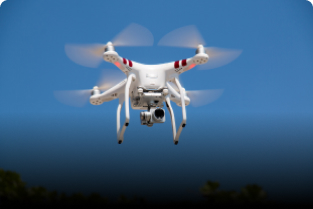Drones, also known as unmanned aerial vehicles (UAVs), have become increasingly popular in industries ranging from photography and agriculture to logistics and defense. At the heart of these devices are their engines, which provide the power needed for flight. Understanding how drone engines work and their replacement costs can help users maintain and optimize their drones effectively.
How Do Drone Engines Work?
Drone engines are the primary components responsible for generating thrust to keep the drone airborne. There are two main types of engines used in drones:
- Brushed Motors:
- These are simpler, older types of motors that use brushes to transfer electrical current to the motor’s rotor.
- How They Work: The brushes create a physical connection with the commutator, allowing electricity to flow and generate a magnetic field. This field interacts with permanent magnets to produce rotation.
- Advantages: Affordable and easy to replace.
- Disadvantages: Less efficient and shorter lifespan due to wear and tear of the brushes.
- Brushless Motors:
- Modern drones predominantly use brushless motors, which are more efficient and durable.
- How They Work: These motors rely on electronic commutation instead of physical brushes. The stator (stationary part) is surrounded by electromagnets, and the rotor (moving part) is equipped with permanent magnets. An electronic speed controller (ESC) manages the flow of current, creating precise and smooth rotations.
- Advantages: Higher efficiency, better performance, and longer lifespan.
- Disadvantages: More expensive than brushed motors.
Factors Influencing Drone Engine Performance
Several factors impact the efficiency and performance of drone engines:
- Weight: Heavier drones require more powerful engines.
- Battery Power: The engine’s performance is directly tied to the quality and capacity of the drone’s battery.
- Propeller Design: The size and shape of propellers influence how effectively the engine converts power into thrust.
How Much Do Drone Engines Cost to Replace?
The cost of replacing a drone engine depends on the type of motor, the drone model, and the brand. Below is a general breakdown:
- Brushed Motor Replacement Costs:
- Typically range from $5 to $20 per motor.
- Commonly found in toy or entry-level drones.
- Brushless Motor Replacement Costs:
- Prices vary widely, from $20 to $150 per motor.
- High-end professional drone motors may cost upwards of $200 each.
- Additional Costs:
- Labor Costs: If you’re not replacing the motor yourself, expect to pay an additional $20 to $50 for professional installation.
- Electronic Speed Controllers (ESCs): In some cases, ESCs may also need replacement, costing $10 to $50 each.
When to Replace a Drone Engine
It’s crucial to know when your drone engine needs replacing to avoid in-flight failures. Signs include:
- Reduced flight time or power.
- Unusual vibrations or noise.
- Overheating during operation.
- Physical damage to the motor or its components.
Tips for Maintaining Drone Engines
To extend the life of your drone’s engines:
- Regular Cleaning: Remove dust and debris, especially after flying in sandy or dusty environments.
- Proper Storage: Store the drone in a dry, cool place to prevent moisture damage.
- Battery Care: Use high-quality batteries and avoid over-discharging them.
Final Thoughts
Drone engines are intricate yet fascinating components that play a vital role in the device’s functionality. Whether you own a recreational drone or a professional-grade UAV, understanding how these engines work and their associated costs can help you make informed decisions about maintenance and replacements. By taking proper care of your drone’s engines, you can ensure optimal performance and longevity.

